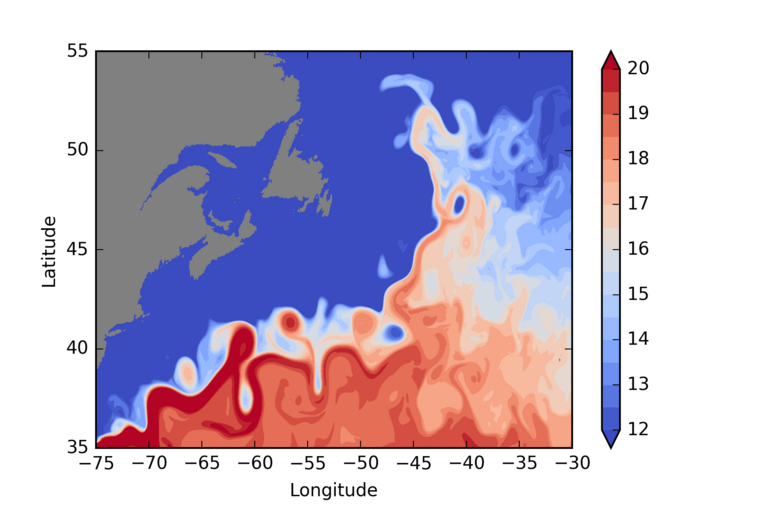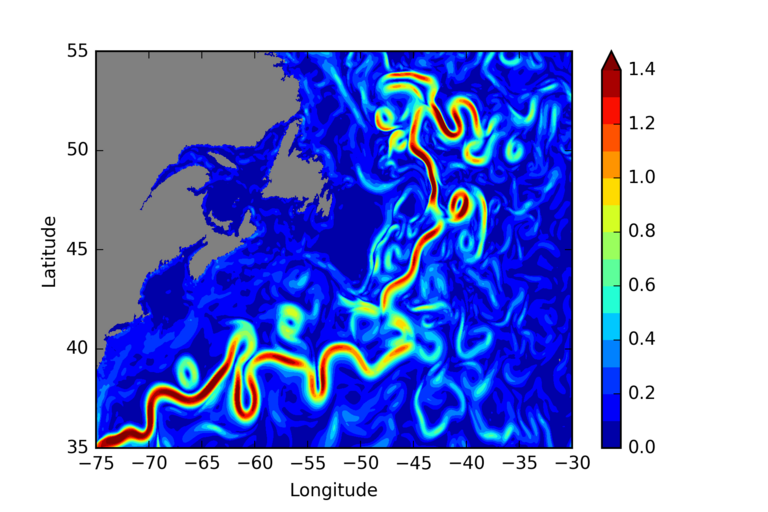Improvements in climate simulations
Feedback between mesoscale eddies and the atmosphere is fundamental
The major western boundary currents, such as the Gulf Stream in the Atlantic or the Kuroshio in the Pacific, transport up to 100 million cubic meters of water per second from the subtropics to higher latitudes. They contribute a huge portion to the energy flux on our planet and are of central importance for both the weather patterns at mid-latitudes and the global climate of the Earth. Without them, for example, the climate in parts of Europe and North America would be much colder. A new study just published in the prestigious journal Nature shows that the dynamics and control of these ocean currents critically depend on the energy exchange between ocean mesoscale eddies and the atmosphere, a process that has not yet been sufficiently taken into account in many climate models.
"From listening to weather forecasts, many people are familiar with the concept of a front, known as the boundary between air masses of different characteristics, usually associated with rainfall," explains Prof. Dr. Peter Brandt, one of the co-authors of the study. "Such fronts are also associated with large ocean currents where they separate areas with very different temperatures," said Brandt. “At these interfaces, the western boundary currents, such as the Gulf Stream and the Kuroshio, form eddies with diameters of a few hundred kilometers. This is where the energy exchange between ocean and atmosphere is greatest," said Prof. Brandt.
"Unfortunately, most climate models used to carry out numerical integrations over longer periods do not yet have the necessary resolution to map these processes properly," said Dr. Richard Greatbatch, Professor of Theoretical Oceanography at GEOMAR and co-author of the study. This leads to the fact that the models cannot correctly reproduce reality,” Greatbatch went on. "We have found that some portions of the Kuroshio in the Pacific are weaker by about one third if this interaction between the atmosphere and ocean is not considered", explains Prof. Greatbatch. This has consequences, for example for the simulation and prediction of extratropical storm systems and other extreme events, as well as their potential modification through climate change, according to the marine scientist from Kiel.
"To carry out such studies we operate very high resolution ocean models at GEOMAR, and the results are then used to further improve the quality of forecasts with coupled ocean-atmosphere models which cannot be operated with such detailed resolution" says Prof. Brandt.
Note:
The study was carried out in part during a sabbatical of Prof. Dr. Ping Chang of Texas A&M University, USA at GEOMAR. Prof. Chang worked at the invitation of the Cluster of Excellence "The Future Ocean" and the Collaborative Research Centre 754 "Climate-Biogeochemistry Interactions in the Tropical Ocean" in Kiel.
Original publication:
Ma, X., Jing, Z., Chang, P., Lui, X., Monturo, R., Small, R.J., Bryan, F., Greatbatch, R., Brandt, P., Wu, D., Lin, X. and Wu, L., 2016: Western boundary current regulated by interaction between ocean eddies and the atmosphere, Nature, doi:10.1038/nature18640
Contact:
Dr. Andreas Villwock (GEOMAR, Communication & Media), Tel.: 0431 600-2802, presse(at)geomar.de




